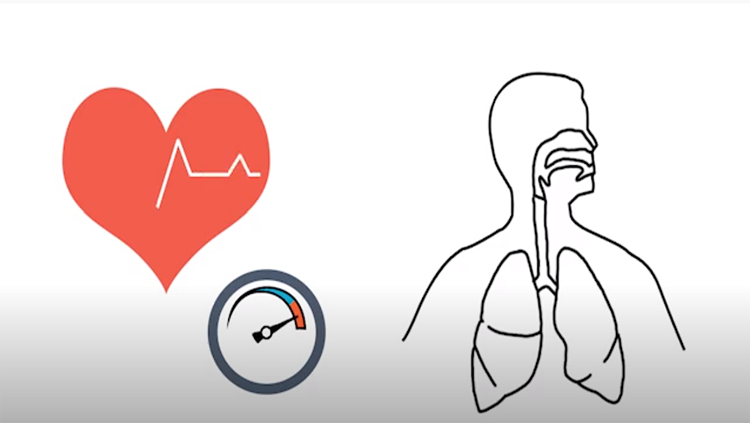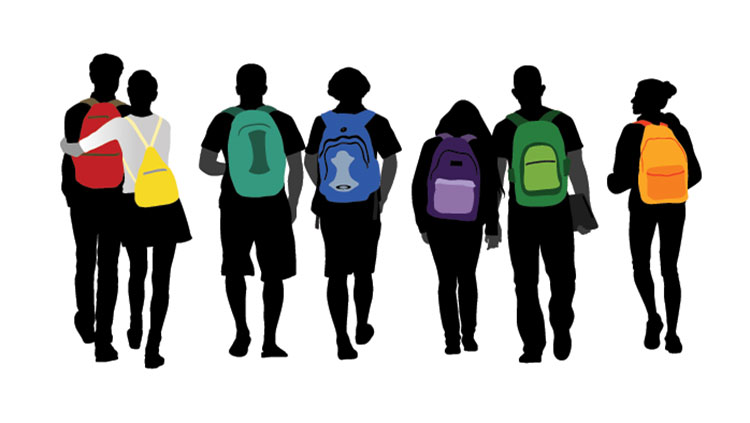Imaging Studies Reflect COVID’s Influence on Younger Brains
- Published13 Dec 2023
- Author Nick Keppler
- Source BrainFacts/SfN

There is little doubt that the COVID-19 pandemic had a bruising impact on the mental health of children and adolescents. And pre-publication research presented during a press conference at the 2023 annual meeting of the Society for Neuroscience demonstrates that stress can be traced in children and teen’s neural connections and cerebral cortexes.
Diagnoses of mental health disorders among minors has grown steadily in the U.S for several decades. One in five children between the ages 3 to 17 were thought to have a mental health condition before COVID. But a professor of brain sciences at the University of Washington, Patricia Kuhl, said the before-and-after research indicates the effects of the pandemic — with its school closures, isolation, and aura of dread — worsened the trend. “We are attributing this advanced acceleration to the effects of the pandemic,” she said, “but with regard to what’s [exactly] causing it, we’ve got to do a lot more research.”
Premature Thinning
Kuhl detailed the pandemic impacts on teen and pre-teen brains. She and her team collected MRI scans from more than 100 volunteers, aged 9 to 17, in 2018. They then gathered a similar selection of volunteers and amassed another set of scans in 2020 and 2021.
A comparison between the two sets showed the cerebral cortexes of teenagers had prematurely thinned, a sign of chronic stress and trauma.
The pandemic’s plague of anxieties, disruptions, learning losses, illnesses, periods of separation, and isolation leave a lot for researchers to pick apart. One important data point is the thinning effect was worse for young women than men, though both genders were hit with the same slate of problems. “The difference between males and females suggests there's something a whole lot bigger going on,” said Kuhl. Researchers wonder how long the differences in cortical thickness and other markers will last as the pandemic generation of teenagers ages into adulthood.
Losing Connections
Another researcher sought to investigate: Could brain imaging predict which teens experienced more sadness and stress during the pandemic?
Caterina Stamoulis, an associate professor of pediatrics at Harvard Medical School, and her team used MRI scans from 671 U.S. teenagers, gathered from a preexisting dataset, the Adolescent Brain Cognitive Development — or ABCD — Study. Lower connectivity and robustness in certain brain circuits at the start of the pandemic were associated with reports of sadness and stress during the later months of 2020. These regions include the limbic network, amygdala, and prefrontal cortices.
The data did not answer questions about which of the myriad of stressors caused the most harm. These are complex questions stretching beyond local anti-COVID policies, said Stamoulis. Social environments, the support the teen had before COVID-19 struck, the engagement of parents, and the consistency of that engagement through the pandemic all seem to be important.
Imaging for Future Insights
Turning away from COVID-19, Margot Wagner, postdoctoral researcher at the University of San Diego California, and her collaborators showed how artificial intelligence more effectively diagnosis mental health disorders in children.
Researchers used an AI program to examine 353 ABCD Study MRI scans of 9- and 10-year-olds diagnosed with bipolar disorder. The algorithm identified some common patterns of disrupted brain connections in networks associated with creative processing, including: the salience, default mode, and central executive networks.
The use of imaging biomarkers could one day shift the entire way we see mental health disorders, Wagner said. They were once entirely chalked up to environmental factors and then specific biological factors. “It’s actually a much more complex problem than just serotonin or just one gene,” said Wagner, “and so casting a wider net in terms of the type of data and studies that we’re collecting … is really the best way, I think, to address and prevent these kinds of things going forward.”
All the panelists emphasized that better data will not equate to easier answers anytime soon, but maybe more informed responses the next time a crisis like COVID-19 overtakes the lives of children and teens. “I think everyone in this panel is suggesting that the social environment of the child and teen is more important than we had previously thought,” Kuhl concluded.
CONTENT PROVIDED BY
BrainFacts/SfN



















